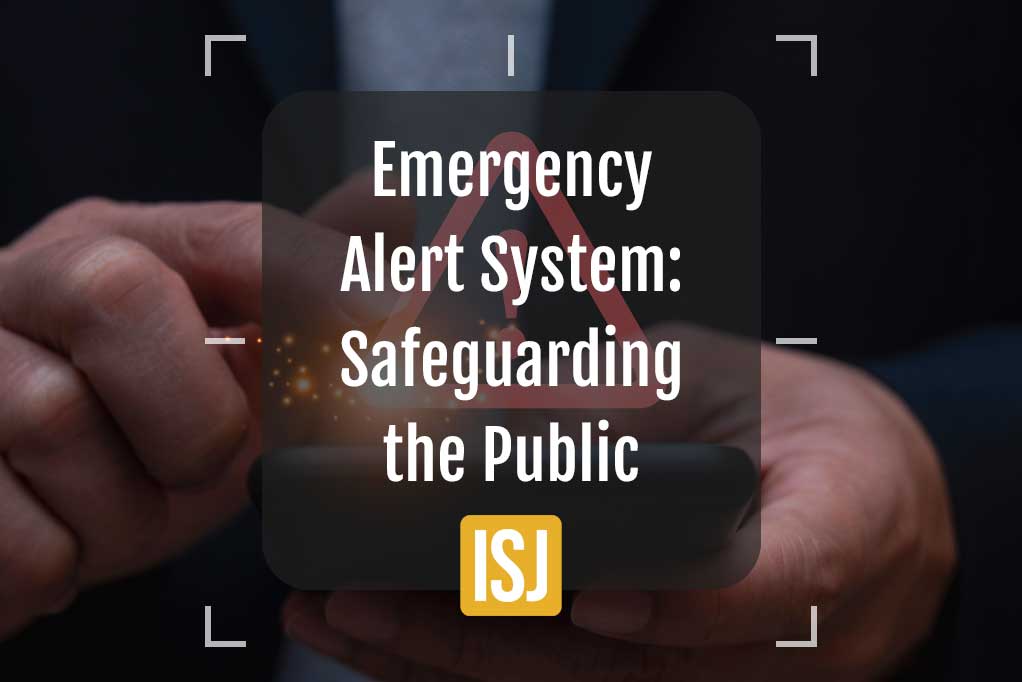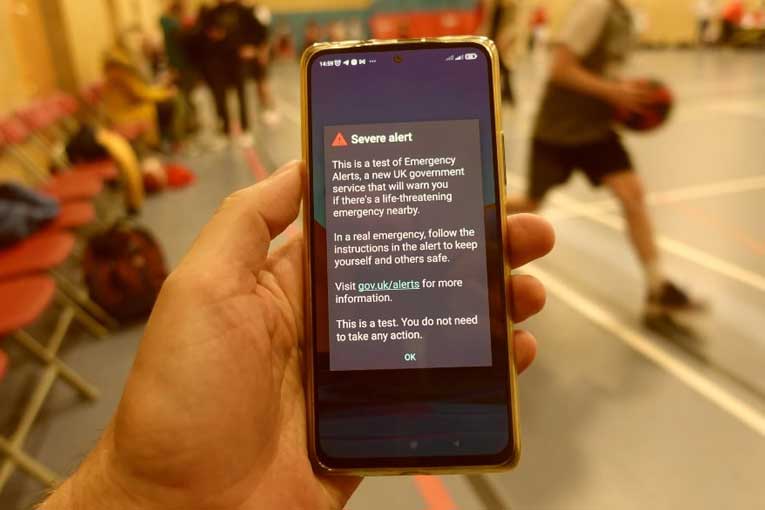Emergency Alert System – Safeguarding Society


James Thorpe
Share this content
The recent tragic incidents in Nottingham, UK, remind us that unforeseen critical events can occur at any moment.
Threats to public safety can range from terrorist attacks and civil unrest to severe weather occurrences like flooding and fires or public health emergencies.
Effective public emergency alert systems play a crucial role in safeguarding the public and minimising the potential impact of such incidents.
These systems enable authorities to swiftly communicate crucial information, instructions and warnings to the affected population.
During emergencies, every second counts and the ability to reach the right people with essential information can save lives.
The Emergency Alert System in the UK & Around the World

In April of this year, a public emergency alert system was tested in the UK which incorporates Everbridge’s cell broadcast technology.
The comprehensive trial was conducted across three major mobile networks: EE, O2 and Three.
These networks represent the majority of mobile subscribers in the UK, comprising a population of more than 65 million inhabitants with an additional 35 million annual visitors.
This cell broadcast-based system effectively utilises the existing telecom infrastructure, eliminating the need for individuals to opt-in and avoid network congestion during emergencies.
Consequently, anyone within a specific geographic area will receive alerts if they are at risk from a public safety or security incident.
Furthermore, the UK alerts system facilitates communication for first responders and assesses the effectiveness of disaster-related communications to enhance future mitigation efforts.
Fully compliant with data privacy regulations, including GDPR, the platform ensures that public safety agencies can instantly send alerts to any device within seconds.
Importantly, no personal details such as names or phone numbers are shared in the process.
The Everbridge Public Warning system is currently helping protect more than 800 million people in more than 24 countries across all five continents.
This includes Germany where following the tragic active shooter incident in Hamburg on 9 March 2023, German authorities issued a geo-targeted mobile phone alert in Hamburg, using cell broadcast powered by Everbridge.
Mitigating Environmental Disasters
The emergency alert system has also played a pivotal role in mitigating the impact of major environmental events by enabling timely and accurate alerts to affected communities.
In Japan, for example, its public alerting system is pivotal for the safeguarding of citizens in the event of earthquakes, tsunamis and other natural disasters.
In the US, state-wide solutions have been instrumental in supporting the government to alert the public in the case of severe weather events, such as hurricanes and tornadoes, enabling authorities to issue critical communications and provide guidance on emergency shelters and evacuation routes.
In Australia, the government used emergency alerting during the devastating bushfires that ravaged the country in 2019-2020 – to issue evacuation orders, notify road closures, deliver critical information about fire risks and shelter locations and facilitate communication with the communities impacted.
The public alerting system’s effectiveness in reaching citizens rapidly and reliably played a significant role in ensuring the safe evacuation of thousands of individuals.
What Makes an Effective Emergency Alert System?
Alerts can be sent through various channels such as broadcasts, mobile apps, text messages, emails and social media, ensuring broad reach and effective communication.
By providing essential information to the public – such as evacuation instructions, safety protocols and real time updates – public alerting systems empower individuals to make informed decisions and take appropriate actions to protect themselves and others.
To ensure an effective public alerting system, however, it should possess several crucial features:
Speed & Reach
Alerts need to reach a wide audience quickly.
This requires leveraging various communication channels, such as cell broadcast messages, SMS, email, mobile applications, social media and public address systems, to ensure messages are received and understood by as many people as possible.
Targeted Notifications
Different individuals may require specific instructions or information during an emergency.
Public alerting systems should be capable of segmenting the audience and delivering tailored messages to relevant groups, such as staff members, visitors or individuals with specific needs.
Two-Way Communication
Enabling recipients to respond to alerts fosters a collaborative environment, allowing authorities to gather vital information from affected individuals and gauge the effectiveness of their response efforts.
Multi-lingual Support
Public spaces and events attract diverse audiences, including tourists and individuals who may not be fluent in the local language.
Providing alerts in multiple languages ensures that critical information is accessible to everyone.
Integration & Interoperability
To enhance the effectiveness of public alerting, seamless integration with other emergency management systems and databases is crucial.
This includes weather monitoring systems, seismic sensors, and social media feeds, enabling authorities to gather real time information and generate alerts based on accurate data.
5 Best Practices of an Emergency Alert System

When implementing a comprehensive emergency alerting system, national and local authorities should consider five recommended approaches which are essential to ensure that every citizen is reached and to facilitate a collaborative response involving multiple agencies in any incident or event:
1. Maintain Communication Throughout All Stages of an Incident
Prepare citizens in advance for potential incidents, promptly alert the public when an event occurs and communicate with them during the response and recovery phases.
Provide information in the local language and establish two-way communication to guide people, including those who can assist, on necessary actions.
2. Engage All Stakeholders in Communication
Establish effective communication channels with citizens, visitors, volunteers, emergency services, support agencies and government departments.
Ensure that all resources are known and reachable across multiple channels, including the ability to send messages in appropriate languages for international travellers.
3. Target Communication to the Right Individuals at the Right Time
Identify the stakeholders who can provide help, those who are impacted and those who need to be informed at each stage of an incident.
Develop strategies to contact them based on the specific incident, enabling seamless two-way communication to check on their safety and receive assistance requests.
4. Utilise Location Intelligence
Utilise information about people’s residential and work locations, as well as their current whereabouts, including access to historical location data.
This data can help emergency services and authorities track individuals in need, assess population density in affected areas and predict movements based on historical behaviour.
It is especially valuable for alerting individuals who have been in specific areas over a certain timeframe.
5. Optimise Technology Effectiveness
Employ a combination of cell broadcast and location-based SMS for comprehensive coverage.
Continuously explore advancements in public alerting technology, such as 5G and satellite communication for improved signal strength, range, penetration and bandwidth as well as machine learning and AI for data analysis, decision making and situational awareness.
In an increasingly interconnected world, public alerting systems have become indispensable tools for safeguarding the public during critical events, particularly in public spaces.
By investing in advanced technology and comprehensive emergency response plans, governments and organisations worldwide can enhance public safety and resilience, ensuring the wellbeing of individuals in critical event situations.
About the Author

Lorenzo Marchetti is Public Affairs & PR Manager at Everbridge. He is a strategic thinker, focused on public policy at the nexus of security, technology and international affairs.
He graduated from Johns Hopkins School of Advanced International Studies for the Master of Arts in International Affairs (MAIA) Program.

